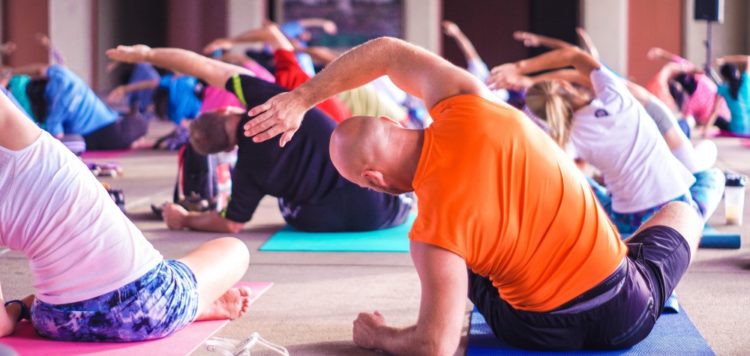Yoga began as a spiritual practice but has now become a popular way of promoting mental and physical well-being. In the US, yoga practice focuses on physical postures (Asana), breathing techniques (Pranayama), and meditation (Dhyana). According to research, over 36 million Americans practice yoga regularly, and the number of people embracing it as a form of physical exercise continues to grow. As fitness becomes increasingly tech-based, many see yoga as a way to stay fit without leaving their comfort zone.
This article looks at how technology is helping yoga enthusiasts with their workouts.
Yoga Clothes with Technology
More and more people are opting for yoga attire combined with technology to help them stay motivated. Wearable X, for example, has launched its Nadi X yoga leggings, which emit a moderate vibration during yoga practice to alert users when they are out of balance. TuringSense offers a similar option with its Pivot Yoga clothing line and a smartphone app that detects and records posture data.
Woven into these garments are sensors that can track heart rate, movement, and other health-related data. This allows yogis to see how their performance changes over time and determine what adjustments they need to make to improve their practice.
Yoga Mats with Smart Technology
With the advent of smart mats, technology in yoga continues to advance. Many mats, such as SmartMat and YogiFi, are now replacing instructors and making the experience more interactive. These mats use AI to provide real-time guidance to adjust the alignment. Users can wirelessly connect their smartphone to the app and start their yoga session with the help of interactive assistance. The Otari smart fitness mat goes a step further by offering users a screen and magnetic camera arm attached to the mat, so users can view the exercises hands-free.
This technology is especially helpful for people who are new to yoga. The mats help them learn the postures correctly and make adjustments if they don’t feel comfortable in a particular stance. They provide instant feedback on how they should be aligned in each pose, which is helpful for beginners. For more experienced yogis, the smart mats offer alternative ways to challenge themselves.
Interactive Apps
Yoga can be a great way to unwind and relieve stress, but it can be difficult to find the time and resources to take classes. Luckily, there are many apps available on Google Play and App Store, which serve as personalized yoga coaches. These apps include features such as meditation sessions, breathing and stretching exercises, that help users overcome stress and anxiety. They also provide instructional videos and soundtracks for each pose, so users can practice in the comfort of their homes with the right audio accompaniment. There are even yoga apps specifically designed for pregnant women (Yogi Birth) or people who experience physical pain (Simply Yoga).
A survey conducted by DoYou Global Yoga found that 85% of the 10,000 respondents prefer to practice yoga at home following tutorials. Online training offers a more personalized, comfortable, and interactive experience. Yoga is all about relaxation, and online apps can help users achieve this state of mind more easily than traditional workout classes. A study conducted by the International Journal of Environmental Research and Public Health found that apps with an attractive interface, identification, and data record are key factors in users’ level of satisfaction.
Meditation and yoga go hand in hand—both involve focusing one’s attention on one thing, which can help to relax the mind and clear away distractions. That’s why many yoga practitioners use apps like Calm. These apps provide users with access to guided meditations from expert practitioners all over the world. Once installed, yogis can choose from various meditation sessions and use them in combination with their yoga practice to get better results.
Smartwatch
Wearable devices are becoming increasingly popular among Americans and are playing a major role in the health and fitness industry. Many of these wristwatches now provide dedicated yoga modes, which can help with daily practice. A Pew Research Center study found that 21% of Americans use a smartwatch or fitness tracker. These devices can provide significant information that can be used to efficiently monitor health-related goals.
For example, the Breath and Prayoga apps on the Apple Watch allow users to track their SPO2 levels, heart rate variability, ECG, and A-fib history. All these modes are useful for yoga practitioners who want to track their progress and see results. Wearing a smart band can help maintain a focused and healthy habit of yoga practice. According to a ValuePenguin survey, smartwatch users exercise more – an average of 4.3 days per week, compared to three days per week for non-wearers.
Conclusion
Yoga is a great way to cope with stress, promote focus, and relieve mental exhaustion. And with the proliferation of dedicated apps, smart wearables, and other devices, yogis are able to get a more clear insight into their performance. With these intelligent and easy-to-use devices, even those who are not as tech-savvy can reap the benefits of an intense workout through guided alignment and correct postures.



























